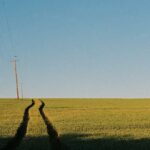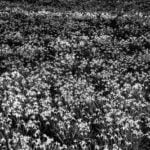Are you curious about the fascinating journey of cotton, from a tiny seed to the soft and versatile fabric we know so well? Look no further! In this article, we will delve into the art of sustainable cotton cultivation, exploring each stage of the process with precision and care. Join us as we unravel the secrets behind selecting the perfect seeds, nurturing the crop through growth and development, and finally reaping the harvest with sustainable practices. Get ready for an enlightening journey through the world of cotton production, as we uncover the remarkable efforts that go into creating your favorite cotton garments.

Cotton Cultivation Process
Cotton cultivation is an intricate process that involves several stages, each crucial for producing high-quality cotton fibers. From seed selection to harvest, every step requires careful attention and sustainable farming practices. Let’s explore the cotton cultivation process in detail.
Climate and Seed Selection
The first step in cotton cultivation is selecting the right climate and seeds. Cotton plants thrive in warm temperatures, ideally between 75-80°F. The soil should be loose and well-drained to facilitate seed germination. Quality seeds with good fiber characteristics are essential for a successful crop.
Key Point: Choosing the right climate and seeds sets the foundation for a successful cotton cultivation process.
Cultivating and Planting
Once the seeds are selected, they are planted in prepared beds or loose earth. It’s important to ensure proper spacing between the seeds to allow enough room for the cotton plants to grow. Weed removal techniques such as pre-sowing or bed formation help maintain a healthy crop by minimizing competition for nutrients and water.
Key Point: Cultivating and planting cotton seeds require careful attention to spacing and weed removal techniques.
Tending and Growth
After planting, the cotton plants require regular care and maintenance. This includes adequate irrigation to ensure sufficient water supply, especially during dry periods. As the plants grow, their stems become stronger, and the leaves provide shade, protecting the cotton bolls from excessive sunlight. This results in the development of high-quality cotton fibers.
Key Point: Tending to cotton plants through proper irrigation and ensuring adequate shade promotes the growth of quality cotton fibers.
Harvesting
Harvesting marks the culmination of months of hard work in cotton cultivation. It starts when the cotton bolls have fully opened, and some leaves have fallen off. The process involves carefully picking the cotton bolls by hand or using mechanical harvesters. After harvesting, the raw cotton undergoes the ginning process to remove seeds, leaf fragments, dirt, and other materials.
Key Point: Harvesting is a critical stage in the cotton cultivation process and requires careful timing and removal of unwanted materials through ginning.
Ginning and Baling
Once the cotton has been harvested, it is transported to the ginning facility. During the ginning process, the raw cotton is cleaned, and the fibers are separated from the seeds. This step ensures that only pure cotton fibers are used in the production of fabrics and other products. After ginning, the cotton fibers are sent for the baling process, where they are compressed into bales for easy transportation and storage.
Key Point: The ginning and baling processes ensure the production of pure cotton fibers, ready for further processing and utilization.
Conclusion
The cotton cultivation process encompasses various stages, starting from seed selection to harvest. Climate suitability, appropriate seed choices, careful cultivation, and attentive tending are essential for successful cotton growth. Harvesting, ginning, and baling further refine the raw cotton into pure fiber form. By understanding and appreciating the intricacies of cotton cultivation, we can make more informed choices as consumers and contribute to a sustainable and environmentally conscious approach to clothing.
“From selecting the right climate and seeds to harvesting and processing, the art of sustainable cotton cultivation involves intricate care at every stage, resulting in high-quality fibers.”
Cotton farming is an intriguing industry that holds many fascinating facts and stories. If you’re curious to learn more about the ins and outs of cotton farming, we invite you to check out our comprehensive guide on the subject. Discover how cotton is cultivated, harvested, and processed, gaining insights into the challenges and rewards faced by cotton farmers worldwide. Click here to uncover the captivating facts about cotton farming: Facts About Cotton Farming.

FAQ
Question 1
What are the key stages involved in the cotton cultivation process?
Answer 1
The key stages involved in the cotton cultivation process include seed selection, cultivating, harvesting, ginning, and baling.
Question 2
What is the first step in cotton processing?
Answer 2
The first step in cotton processing is harvesting, which marks the culmination of months of planting and tending the crop.
Question 3
What happens after the cotton is harvested?
Answer 3
After harvesting, the raw cotton undergoes the ginning process, where seeds, leaf fragments, dirt, and other materials are removed.
Question 4
What is the purpose of ginning in cotton production?
Answer 4
The purpose of ginning is to separate the fibers from the seeds and remove any impurities, preparing the raw cotton for further processing.
Question 5
What are the main environmental considerations in cotton cultivation?
Answer 5
In cotton cultivation, it is important to consider using sustainable farming practices, such as pre-sowing or bed formation, weed removal, and irrigation, to minimize the environmental impact of the industry.
“`JSON
“`
- China II Review: Delicious Food & Speedy Service - April 17, 2025
- Understand Virginia’s Flag: History & Debate - April 17, 2025
- Explore Long Island’s Map: Unique Regions & Insights - April 17, 2025
















